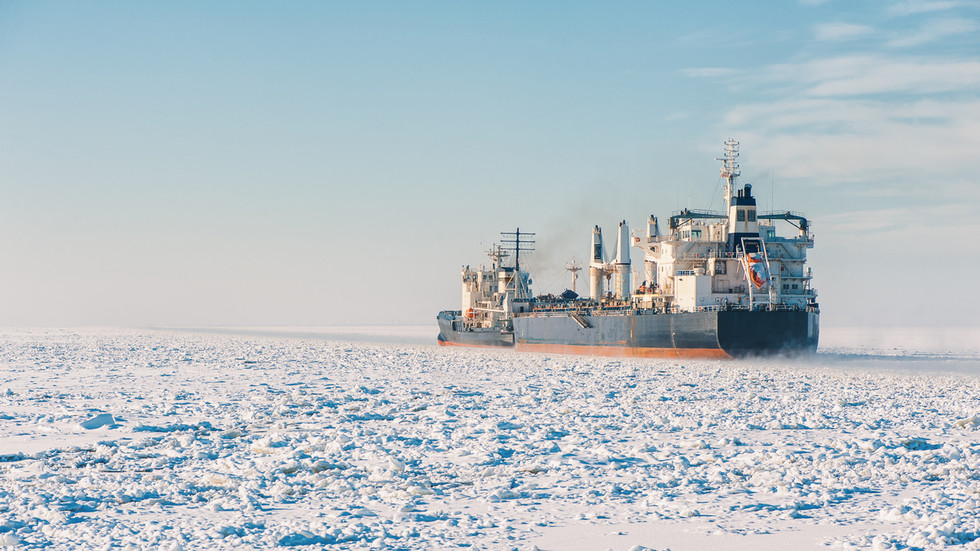The use of the Northern Sea Route is expected to boost freight turnover through Russian waters
The first Chinese container ship has completed a transit to Europe via the Arctic’s Northern Sea Route (NSR), Russian state nuclear giant Rosatom announced on Tuesday.
Backed by Russia’s nuclear icebreaker fleet, the voyage nearly halved the shipping time compared to traditional southern routes, according to Rosatom, which has a fleet of atomic ice-breakers and operates the NSR.
Russia has been developing the NSR, a transport corridor that runs through its Arctic and Far East regions and serves as the shortest shipping link between Europe and the Asia-Pacific region. The NSR is expected to become a major trade route and could drastically reduce transportation times compared to traditional pathways through the Suez or Panama canals.
The vessel arrived at Britain’s Port of Felixstowe after a 20-day transit from China’s Ningbo. The cargo ship, with a total deadweight of nearly 25,000 tons, is scheduled to subsequently call at the European hubs of Rotterdam and Hamburg before ending its voyage in St. Petersburg.
The Arctic passage is being closely monitored by the global shipping industry as a faster alternative. A typical voyage via the Suez Canal takes about 40 days, while the route around Africa’s Cape of Good Hope takes approximately 50 days.
Rosatom stated that the route is intended to complement existing corridors and significantly contribute to the growth of global trade.
In 2024, cargo shipments along the NSR reached 37.9 million metric tons, according to Russia’s Ministry for the Development of the Far East and Arctic.
Russia has deployed eight nuclear icebreakers, including four of the latest generation, to guarantee year-round navigation on the NSR, special representative for Arctic development at Rosatom Vladimir Panov said earlier this month. The vessels create channels through the ice, allowing conventional cargo ships to use the passage.
President Vladimir Putin has previously defined the development of the NSR as a national strategic priority. Moscow’s target is to increase annual cargo volume on the route to 200 million tons by 2030, with plans to upgrade northern seaports and expand its Arctic fleet.
You can share this story on social media:
Read the full article here


